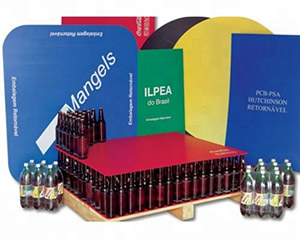
In today’s fast-paced supply chain environment, businesses are under pressure to ensure their products are delivered safely, efficiently, and sustainably. One of the most crucial components of secure and organized shipping is the humble corrugated plastic layer pads — a versatile, cost-effective, and reusable solution that is transforming industries around the world.
Whether you’re shipping glass bottles, metal cans, food containers, or electronic components, corrugated plastic layer pads offer a superior alternative to traditional paperboard and wooden separators. In this comprehensive guide, we’ll dive deep into what these pads are, their key features, the industries using them, how to choose the right type, and what benefits they offer in terms of cost, durability, and environmental impact.
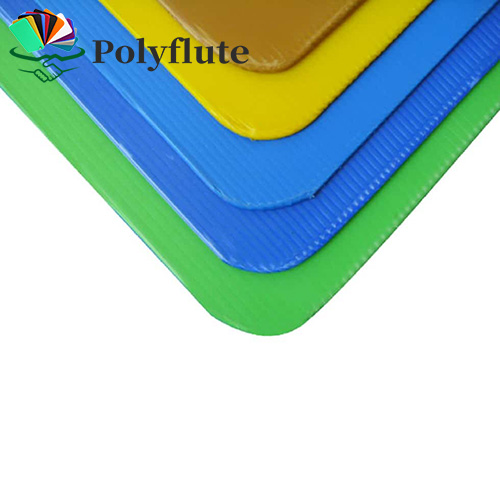
Corrugated plastic layer pads, also known as plastic divider sheets or Polyflute pads, are lightweight yet strong plastic sheets made from polypropylene (PP) or polyethylene (PE) resins. These pads are constructed using a fluted (corrugated) plastic structure sandwiched between two flat layers, giving them impressive rigidity while keeping them light.
Thanks to these properties, corrugated plastic layer pads outperform cardboard and wood alternatives in a wide range of applications.
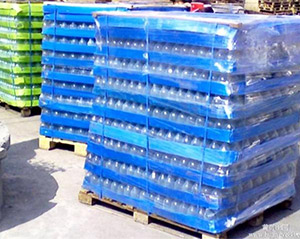
Let’s break down the top reasons companies are making the switch to corrugated plastic layer pads in their logistics and packaging systems:
Corrugated plastic layer pads offer exceptional strength-to-weight ratio. They provide reliable separation between product layers, minimizing movement, vibration, and contact that often leads to damage during transport.
While the initial investment in plastic pads may be higher than paperboard alternatives, their durability and reusability translate into lower cost per trip in the long run. A single corrugated plastic pad can be reused hundreds of times under the right conditions.
Unlike cardboard, which absorbs liquids and can harbor bacteria, corrugated plastic is impermeable to moisture and can be easily washed and sanitized. This makes it ideal for industries with strict hygiene requirements such as food, beverage, and pharmaceuticals.
Despite their strength, plastic layer pads are significantly lighter than wooden dividers, reducing the overall weight of shipments and thereby lowering transportation costs. Their ergonomic design also makes manual handling safer and more efficient.
Made from recyclable polymers like polypropylene, these pads contribute to a more sustainable supply chain. Many companies are now replacing single-use materials with recyclable alternatives as part of their ESG goals.

When it comes to corrugated plastic layer pads, not all products are created equal. The wide range of applications across industries calls for a variety of pad types—each designed to meet specific performance, handling, and durability requirements. Understanding the most popular types of corrugated plastic layer pads on the market today can help you choose the best one for your operational needs.
The types differ based on factors such as thickness, surface treatment, edge sealing, antistatic features, and food safety certifications. Whether you are transporting beverages, electronics, food, or pharmaceutical items, there’s a specific type of layer pad optimized for that purpose.
Here are some of the most common and widely used variants:
| Type | Description | Ideal Use Cases | Key Benefits |
|---|---|---|---|
| Standard Polypropylene Layer Pad | Made from twin-wall PP plastic, lightweight, waterproof, and cost-effective | General logistics, warehousing, light industrial goods | Economical, durable, reusable |
| Food-Grade Layer Pad | Manufactured using virgin PP with food-safe additives; may include smooth finish or sealed edges | Dairy, meat, produce, frozen foods | Hygienic, washable, resistant to bacteria |
| Edge-Sealed Layer Pad | Features sealed or hemmed edges to prevent moisture and dirt from entering the core | High-hygiene industries, pharmaceutical packaging | Longer lifespan, enhanced hygiene |
| Antistatic / ESD Layer Pad | Made with antistatic or conductive additives to protect sensitive electronic parts | Electronics, automotive components | Prevents electrostatic discharge, dust-resistant |
| Heavy-Duty Layer Pad | Thicker and more rigid (6mm to 10mm) for heavy or sharp-edged goods | Metal parts, glassware, industrial chemicals | Maximum impact resistance and load support |
| UV-Resistant Layer Pad | Treated with UV stabilizers for outdoor or long-term storage | Agriculture, horticulture, outdoor warehousing | Prolonged outdoor durability |
| Printed / Color-Coded Layer Pad | Customized with logos, instructions, or color for sorting and branding | Warehouse logistics, product differentiation | Better organization and inventory tracking |
Each type of corrugated plastic layer pad is designed with a specific need in mind. For instance, food-grade layer pads often undergo third-party certifications to ensure they meet international hygiene standards. In contrast, antistatic versions are embedded with conductive carbon black or other dissipative materials to provide protection against ESD (electrostatic discharge).
In warehouse operations, color-coded and printed layer pads have also become increasingly popular. These not only improve efficiency and accuracy in inventory management but also help reduce handling errors in complex supply chains.
When selecting a type, consider your industry’s compliance requirements, your operational environment (e.g., high humidity or outdoor exposure), and the physical properties of the goods being transported or stored. Working with a manufacturer that offers flexible customization ensures that the final product is optimized for your exact application, helping you reduce waste, minimize damage, and improve turnaround time.
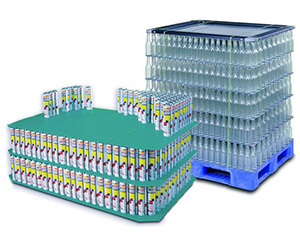
The use of corrugated plastic layer pads is growing rapidly across many sectors. Below are some of the industries that benefit most from these innovative packaging solutions:
Bottles and cans, especially glass ones, are fragile and prone to damage during transport. Corrugated plastic layer pads separate each layer, absorb shocks, and maintain stack stability on pallets. Their water resistance also prevents damage from condensation during cold storage or international shipping.
From dairy products to packaged meats and frozen foods, corrugated plastic pads are widely used for their moisture resistance, hygienic surfaces, and ability to withstand temperature fluctuations. They are ideal for cold chains and clean environments where paper or wood alternatives would absorb moisture or degrade.
With stringent cleanliness and safety requirements, the pharmaceutical industry prefers corrugated plastic layer pads that can be easily disinfected and reused without contaminating sensitive medical products. The non-toxic, inert material ensures compliance with regulatory standards while offering durability and precision in product separation.
Parts like circuit boards, wiring harnesses, plastic trims, and metal components require protective, static-resistant dividers that prevent scratching, impact, and dust accumulation. Corrugated plastic layer pads with antistatic or conductive treatments ensure safe transport of sensitive components and reduce packaging waste through reusability.
Fruits, vegetables, and flower trays often require efficient stacking during harvesting and distribution. Plastic layer pads provide lightweight separation, effective ventilation, and moisture protection for delicate produce, helping reduce spoilage and support sustainability initiatives in the supply chain.
In general warehousing and logistics, corrugated plastic layer pads serve as dividers on pallets to allow safe stacking, quick identification, and faster loading and unloading. Their long service life and customizable sizes make them a favorite in high-turnover distribution centers and automated systems.
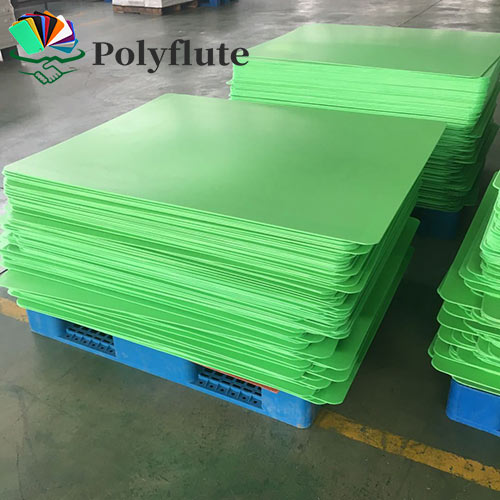
One of the reasons corrugated plastic layer pads are so effective is their adaptability. Manufacturers can tailor them to your specific operational needs. Here are key customization parameters to consider:
Typical thickness ranges from 2mm to 10mm. Thicker sheets offer more rigidity and protection for heavier goods, while thinner options are cost-effective for lighter loads.
Layer pads can be cut to any dimension to match pallet sizes (e.g., 1200mm x 1000mm, 1100mm x 1100mm) or custom crate dimensions.
Color options support warehouse organization and product identification. For instance, blue for food-grade use, black for industrial parts, and yellow for fragile goods.
Pads can be edge-sealed or hemmed to prevent contamination or water absorption at the edges, enhancing longevity.
Logos, handling instructions, or barcodes can be printed directly onto the surface for better inventory management and branding.
For electronics, anti-static or ESD-safe (electrostatic discharge) materials can be incorporated to protect sensitive components.
Choosing the right corrugated plastic layer pads for your business requires understanding your product’s weight, fragility, moisture sensitivity, and hygiene requirements. Here are some guiding questions:
Consulting with an experienced corrugated plastic manufacturer ensures that the product specifications align with your operational needs.
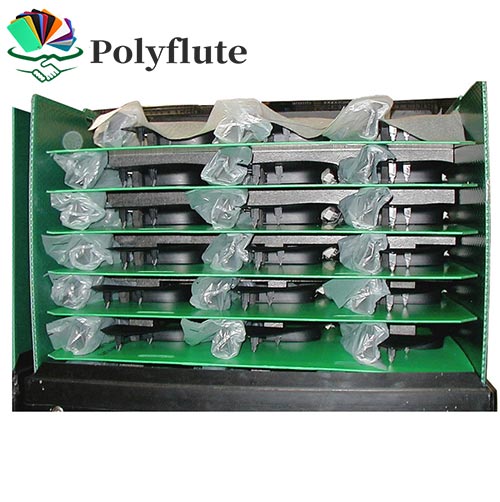
| Feature | Corrugated Plastic Layer Pads | Cardboard Layer Pads | Wooden Layer Pads |
|---|---|---|---|
| Durability | High (Reusable hundreds of times) | Low (Single-use) | Moderate |
| Water Resistance | Excellent | Poor | Moderate |
| Hygiene | Easy to clean, non-absorbent | Absorbs moisture, can mold | Absorbs liquids |
| Customization | High | Moderate | Limited |
| Environmental Impact | Recyclable, reusable | Often non-recyclable | Biodegradable but heavy |
| Weight | Lightweight | Very light | Heavy |
| Cost Efficiency | High over time | Low | Moderate |
As shown above, corrugated plastic layer pads offer a balanced solution between hygiene, durability, cost, and eco-friendliness.
As more businesses strive to reduce waste and carbon emissions, switching to reusable, recyclable packaging components like corrugated plastic layer pads makes perfect sense.
By integrating corrugated plastic into your packaging process, your company can align operations with sustainability goals while also saving money over time.
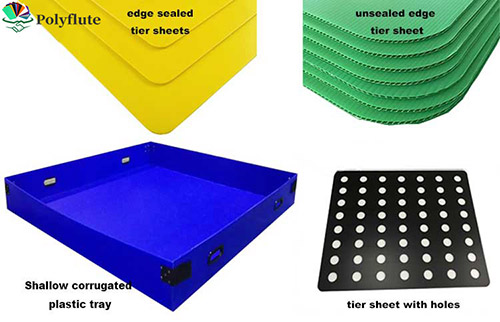
To maximize the life span and performance of corrugated plastic layer pads, follow these simple guidelines:
A European bottled water producer switched from cardboard dividers to 5mm polypropylene corrugated plastic pads. Over 12 months, the company cut costs by 35% thanks to pad reusability and reduced product loss from breakage.
An Australian fruit exporter used paperboard for crate lining, generating weekly waste. By using sealed-edge plastic pads, they drastically reduced disposal volumes, leading to significant landfill savings.
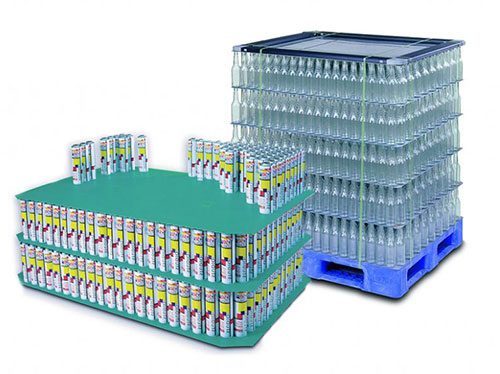
Corrugated plastic layer pads are more than just a packaging accessory—they’re a smart investment in the efficiency, hygiene, and sustainability of your supply chain. Offering unmatched durability, adaptability, and eco-friendliness, these pads are rapidly becoming the gold standard across diverse industries.
Whether you’re a beverage manufacturer, food supplier, electronics distributor, or logistics provider, upgrading to corrugated plastic layer pad will reduce breakage, streamline processes, and improve bottom-line performance.
With over 15 years of manufacturing experience, Polyflute specializes in producing high-quality Polyflute corrugated plastic layer pads customized to meet the diverse needs of global industries. Our factory adheres to strict quality standards, ensuring every pad we deliver provides maximum performance and longevity. Contact us today for bulk orders, samples, or consultation tailored to your packaging needs.
